Mole Poblano Ingredients: 7 Spices, 1 Sauce, Infinite Flavor!
Ever wondered what makes Mole Poblano taste like a warm hug from your abuela's kitchen? The answer lies in the mole poblano ingredients. This rich, complex sauce is a staple of Mexican cuisine, and it’s all thanks to a magical mix of spices, chiles, nuts, seeds, and—wait for it—a touch of chocolate. Yep, you read that right.
In this article, we’re diving deep into the heart (and pantry) of Mole Poblano. We’ll explore the essential ingredients, compare different spice profiles, offer practical cooking tips, and even show you how to tweak the recipe based on what you’ve got in your cupboard. Let’s spice things up!
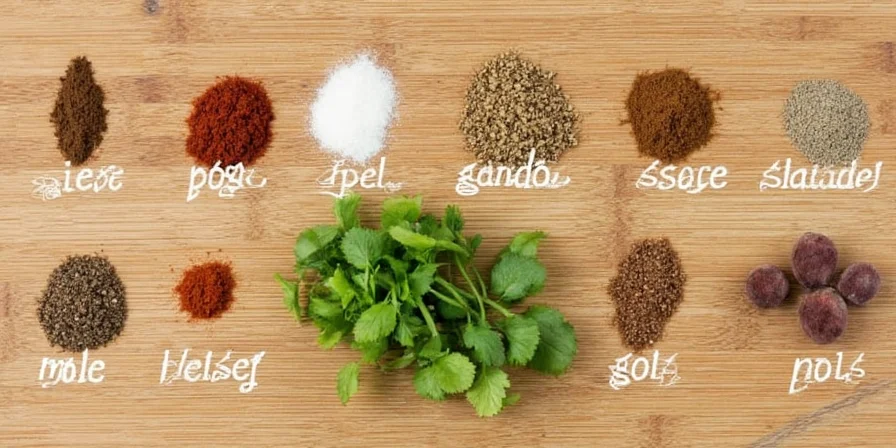
Table of Contents
- What Is Mole Poblano?
- The Core Ingredients: A Breakdown
- Spice Comparison Table
- Pro Tips for Cooking Like a Pro
- Common Substitutions & Swaps
- History & Tradition Behind the Sauce
- Conclusion
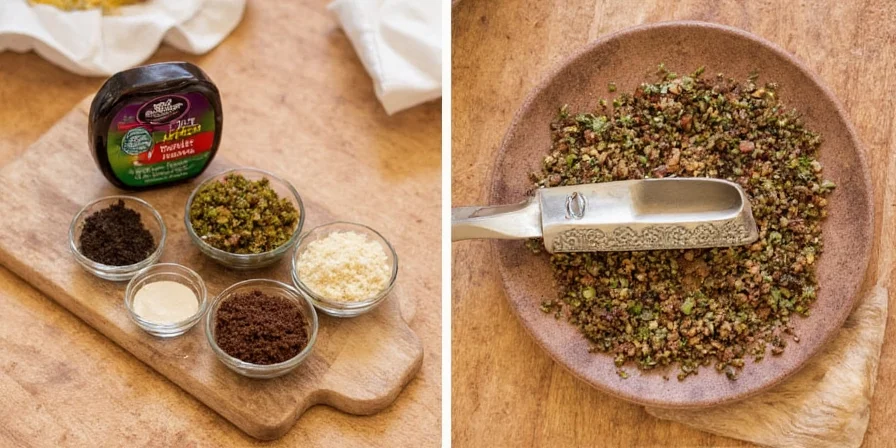
What Is Mole Poblano?
Mole Poblano is a traditional Mexican sauce hailing from Puebla, known for its deep, earthy flavor and velvety texture. It’s often served over turkey or chicken during festive occasions like Día de los Muertos and Christmas. The sauce can contain over 20 ingredients, but at its core, it’s a harmonious blend of dried chiles, spices, seeds, nuts, and a hint of bitter-sweet chocolate.
Why It's So Special
- Complex flavor layers
- Perfect balance of sweet, spicy, smoky, and savory
- Centuries-old culinary tradition
The Core Ingredients: A Breakdown
Let’s break down the mole poblano ingredients that make this sauce so unforgettable:
1. Dried Chiles
The base of any good mole poblano starts with a trio of dried chiles: ancho, mulato, and pasilla. Each brings a unique flavor profile:
- Ancho: Sweet, fruity, and mild
- Mulato: Darker, richer, with hints of licorice and coffee
- Pasilla: Slightly smoky, herbaceous, and deeply savory
2. Toasted Spices
Roasting spices enhances their flavors dramatically. Here’s the typical lineup:
- Cumin
- Cinnamon
- Black pepper
- Coriander seeds
- Garlic powder
3. Seeds & Nuts
These add body and nutty richness:
- Sesame seeds
- Almonds or peanuts
- Tomatoes (yes, technically a seed!)
4. Chocolate – The Secret Touch
Dark chocolate (usually Mexican-style tablets like Ibarra or Abuelita) adds depth and subtle bitterness to balance the heat and sweetness.
5. Bread or Tortilla
A slice of day-old bread or a corn tortilla helps thicken the sauce and smooth out the flavors.
6. Broth or Stock
Used as the liquid base to thin the sauce—chicken broth is traditional, but vegetable works great too.
7. Thickeners: Tomatillos or Plantains
To give mole its signature thickness and a touch of sweetness, some recipes use tomatillos or ripe plantains.
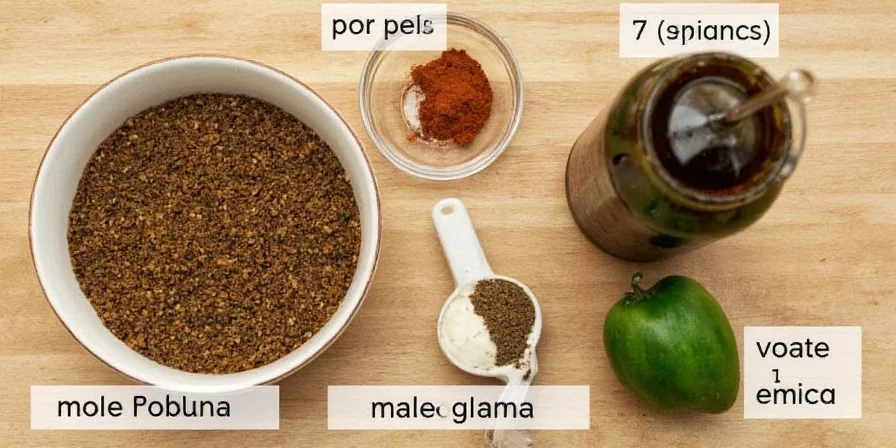
Spice Comparison Table
| Spice | Flavor Profile | Heat Level (SHU) | Best Use in Mole |
|---|---|---|---|
| Ancho | Sweet, raisin-like, fruity | 1,000–2,000 | Base sweetness and color |
| Mulato | Earthy, chocolatey, dark coffee notes | 2,500–3,000 | Depth and complexity |
| Pasilla | Grassy, smoky, slightly bitter | 2,500–3,500 | Smoky backbone |
| Cumin | Earthy, pungent, warm | N/A | Enhances umami |
| Cinnamon | Woody, sweet, aromatic | N/A | Warm, floral contrast |
| Black Pepper | Peppery, sharp, mildly hot | 10,000–30,000 | Spice lift and brightness |
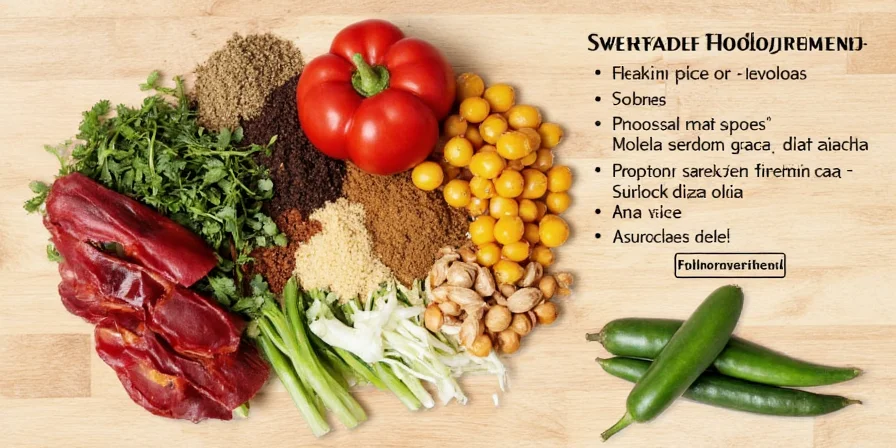
Pro Tips for Cooking Like a Pro
Ready to tackle mole poblano in your kitchen? These pro tips will help you nail the flavor every time:
- Toast Your Ingredients: Always toast the spices, chiles, and seeds in a dry pan before blending. This unlocks their full flavor potential.
- Don’t Skip the Blanching Step: For cleaner, smoother skin removal, briefly blanch the tomatoes and chiles in boiling water before peeling them.
- Blend in Stages: Blend the chiles and aromatics separately from the nuts and seeds for better texture control.
- Strain the Sauce: A fine mesh strainer or cheesecloth removes any gritty bits and gives you that luxurious, silky texture.
- Simmer Slowly: Low and slow is the name of the game. Letting the mole simmer gently for 30–45 minutes melds the flavors beautifully.
Common Substitutions & Swaps
If you're missing one of the classic mole poblano ingredients, don’t panic! Here are some smart swaps:
- No Mulato Chiles? Use extra ancho and a pinch of cocoa powder to mimic the earthy depth.
- Missing Pasilla? Substitute with guajillo chiles and add a splash of balsamic vinegar for acidity.
- Out of Almonds? Cashews or sunflower seeds work well in a pinch.
- No Mexican Chocolate? Use 85% dark chocolate + a sprinkle of cinnamon and vanilla extract.
- Want Less Work? Use store-bought mole paste—but be sure to taste and adjust salt, sugar, and spice levels.
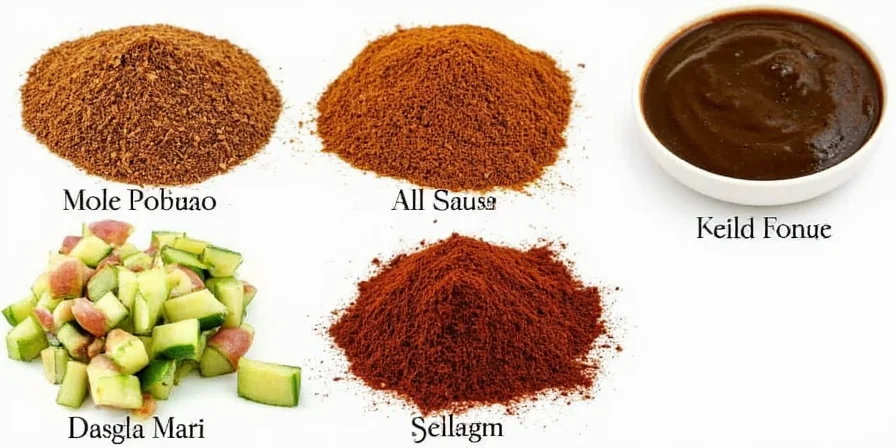
History & Tradition Behind the Sauce
Mole Poblano isn’t just a dish—it’s a piece of history. Originating in Puebla in the 17th century, legend has it that nuns at the Convent of Santa Rosa created the sauce in honor of a visiting bishop. They threw together everything in their pantry to create something truly special—and thus, mole was born.
Today, mole poblano remains a symbol of celebration, family, and heritage. Its preparation is often a communal event, with generations coming together to roast, grind, and stir the sacred sauce.
Mole Poblano Around the World
While deeply rooted in Mexican culture, variations of mole have appeared globally—from Peruvian mole verde to California-inspired vegan versions using cashew cream and avocado instead of chocolate.
Conclusion
Mastering the art of mole poblano starts with understanding the essential mole poblano ingredients and how they interact. From dried chiles and aromatic spices to the secret kiss of chocolate, each component plays a role in creating that legendary depth of flavor.
Whether you're a seasoned home cook or a spice-loving beginner, making mole poblano is a rewarding journey—one filled with warmth, tradition, and a whole lot of love. So roll up your sleeves, gather your ingredients, and get ready to impress your tastiest guests with a sauce that tastes like Mexico in a spoonful.
And remember… mole is more than food. It’s a legacy, one delicious bite at a time.

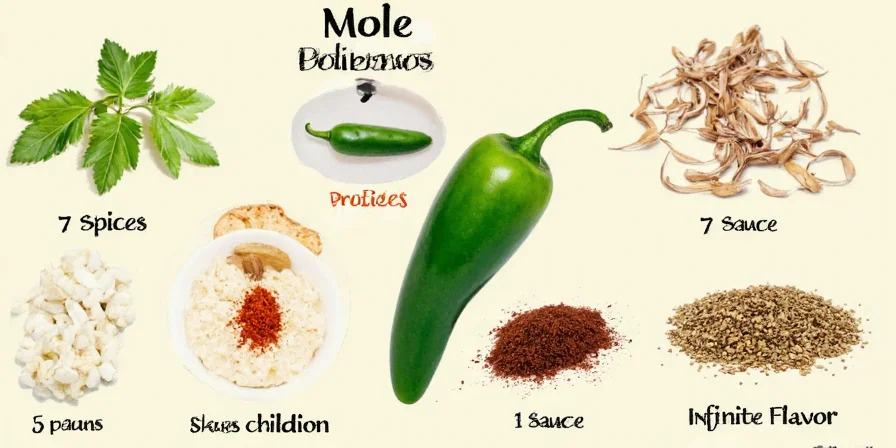









 浙公网安备
33010002000092号
浙公网安备
33010002000092号 浙B2-20120091-4
浙B2-20120091-4